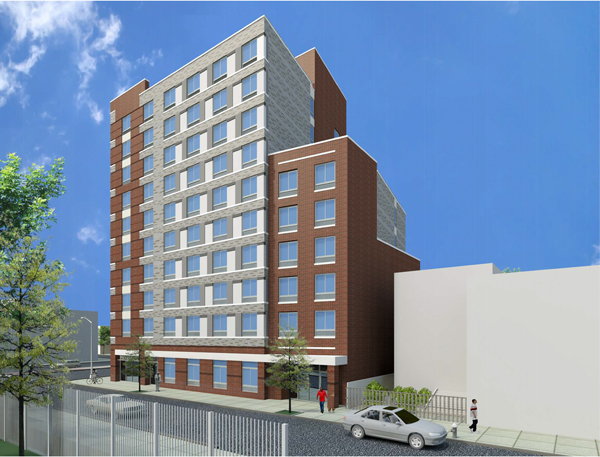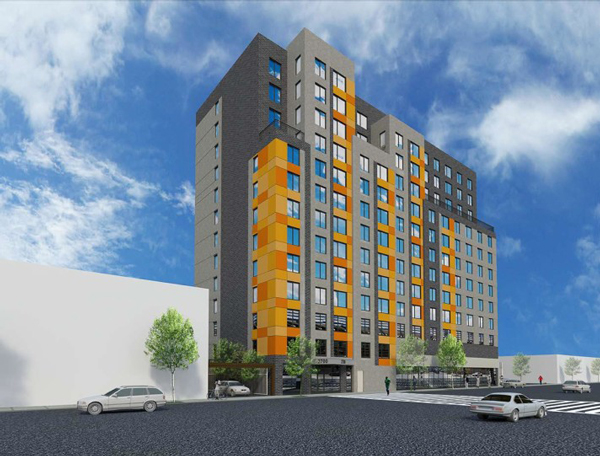Alan Bell has spent most of his five-decade career in New York City real estate focused on two simple questions: what are the city’s most acute housing problems, and what can he do to solve them?
“I have always seen myself as someone out to ‘fix’ the city,” he said. “I started at a time when the city was in serious decline – ’70s, ’80s and ’90s – and developed both market-rate housing when little was being built in neighborhoods I saw as those that could be changed, and affordable housing in some of the city’s most distressed locations. When the thrill of solving the city’s housing problems changed, I changed my focus.”
Bell, 65, arrived in New York from Philadelphia in 1969 to attend Columbia University. He has seen the city teeter on the verge of bankruptcy and make a dramatic turnaround, and the types of projects he pursues have shifted accordingly.
When the city was struggling financially, he built market-rate housing projects in emerging neighborhoods ranging from the East Village to Bushwick. And now that sky-high rents have become one of New York’s thorniest issues, he has turned his attention to building up the city’s affordable housing stock.
“I am clearly no longer needed to develop market-rate housing in this town,” the B&B Urban founder and CEO said. “There are plenty of folks that can do that. My new focus is on developing – efficiently – high-quality mixed-income affordable housing.”
From Williamsburg to Williamsbridge
Bell’s focus on affordable housing has taken him to some of the farthest flung neighborhoods in Brooklyn and the Bronx. His list of ongoing developments includes a 100-unit affordable housing project in East New York, a 173-unit project in Williamsbridge, and a 136-unit project in Kingsbridge, while his completed developments include a 115-unit project in Norwood and an 87-unit project in Crown Heights.
This focus on the unheralded parts of New York is nothing new for Bell. He spent the bulk of his career at Hudson Companies, which he founded in 1986, and traced much of the firm’s success to arriving early in developing neighborhoods. Hudson completed an affordable housing project in Williamsburg back in the early 1990s, for instance, and the company bought an East Village site at 223-237 East 6th Street out of bankruptcy in 1994, which it then sold in 2015 for $60 million.
Hudson also entered Bushwick early with the Knick Condominium building at the corner of Knickerbocker Avenue and Hart Street, although the timing on that project ended up being less than ideal.
“It didn’t turn out well because we finished in 2007, and the market collapsed,” Bell said, “but the job is a beautiful job.”
Despite his current focus on deep Brooklyn and the northern reaches of the Bronx, Bell insists he is no longer on the lookout for New York’s next big neighborhood. His only professional interest now is in building affordable housing.
“People offer him market-rate sites, and he turns them down,” his wife and business partner Elisa Barnes said.
Bell agreed, explaining that he found market-rate developments much more interesting about 10 years ago but became less passionate about them around 2006 after Hudson Companies completed work on the J Condominium project in Dumbo.
“It’s a different environment now,” he said. “You look around, what do they need you for? A million people want to use their money to buy sites and build market-rate.”
The decision to focus on affordable housing made financial sense as well, as the city is likely to both always have a need for it and not go out of business anytime soon.
“Affordable housing is good business,” Bell said. “It’s a difficult business, but yeah, you have no market risk.”
From Hudson to B&B
Although Hudson Companies is still going strong today, with massive projects in the works including La Central in the South Bronx, the redevelopment of the Brooklyn Heights library and Gowanus Green in Brooklyn, Bell is no longer involved with the company (apart from ownership interests in some completed projects). He left in 2010 to start B&B, which has just five employees and about $125 million currently in construction.
Representatives from Hudson, which does a mix of affordable and market-rate projects, declined to comment for this story. Bell said he left to focus solely on affordable housing.
“I had lost my interest in doing market-rate housing, and that was really the divergence,” he said. “I wanted to just concentrate on affordable housing. That’s really all I want to do.”

Rendering of 315 Linwood Street (Credit: Michael Gelfand/MHG Architects)
Duane Matti, a senior vice president at Wells Fargo who has been working with Bell for about 25 years, described affordable housing as something that Bell is genuinely passionate about.
“I think going off on his own allowed him the freedom to pursue exactly the kind of housing he wanted to develop without having to work with partners,” he said.
B&B partners with other real estate firms on its projects, often collaborating with bigger affordable developers like L+M Development Partners. Bell described L+M as an ideal partner to manage the buildings, especially given that B&B is not interested in having long-term ownership over its properties. The two firms are currently working together on the East 162nd Street Court and Kingsbridge Heights Apartments projects in the Bronx.
Lisa Gomez, chief operating officer at L+M, said their current partnership allows him the freedom to focus on what he enjoys about real estate while paying less mind to the other aspects.
“He’s able to continue to do his work and know that the project that he worked on is being taken care of and managed properly without actually having to do it himself,” she said.
Much of the process he developed at Hudson still shapes his investment decisions at B&B — he still looks for sites with subway access and retail presence. He doesn’t want tenants in his new buildings to be stuck “out in the boonies,” he said.
Developing affordable housing is more challenging than developing market-rate housing, he said. The difficulties include finding land at the right price, securing a nonprofit service provider, arranging financing and getting approval from local community boards, whose members can have concerns ranging from units designated for the homeless to the number of parking spaces.
“You really want to get a heated discussion going? Talk about parking,” he said. “So we compromised on our building across from the Kingsbridge Armory, meaning do I think it’s a good idea? No, and I told them I didn’t think it was a good idea. But you know what? If that’s really what you want, you feel that strongly about it, I’m going to give you 20 parking spaces.”
A long memory
Bell has been in the New York City real estate game since his days helping to organize tenants as an undergrad at Columbia, which he said gave him with a sense of perspective during the city’s leaner years.
“I was cognizant of the fact that the successful New York City real estate families had always been people who developed and held,” he said, “and that the city experienced cycle after cycle after cycle, and there’s a lesson there.”

Rendering of 2700 Jerome Avenue (Credit: MHG Architects)
Bell’s early days as a developer were rough. He would have armed guards at his construction sites to help ensure that the plumbing workers installed would still be there in the morning, and labor “coalitions” would frequently show up with baseball bats and tire irons to convince developers that they should hire some of their people.
“As recently as the mid-90s, and I’m not exaggerating, you could have gone to Lower Manhattan, you could have rolled a bowling ball down the sidewalk at noon and not hit anybody,” Bell said. “I mean, it was dead.”
Bell, who worked in the Ed Koch administration and also had a stint in real estate banking, cited demographic shifts as a key reason for New York’s resurgence.
“People didn’t want to spend all their lives commuting,” he said. “The whole ‘Ozzie and Harriet’ view of living in a house, married couple with their kids, dad takes the train in and goes back out—that was all going away gradually.”
Don’t stop him now
Bell has no intention of going outside of New York, even when it only means crossing a county line.
“People offer me stuff in Yonkers. I say I’m not going to Yonkers. It’s too far. It’s a whole other place,” he said. “Real estate is a local business, ultimately. I know there are national companies that go build everywhere, but that’s not the way I see it.”
Although he has reached the traditional age of retirement at 65, he plans to continue focusing on affordable housing in Brooklyn and the Bronx until he can’t do it any longer.
“What else am I going to do? Open up a restaurant?” he said. “I don’t golf. I don’t play tennis. This is what I know how to do.”
